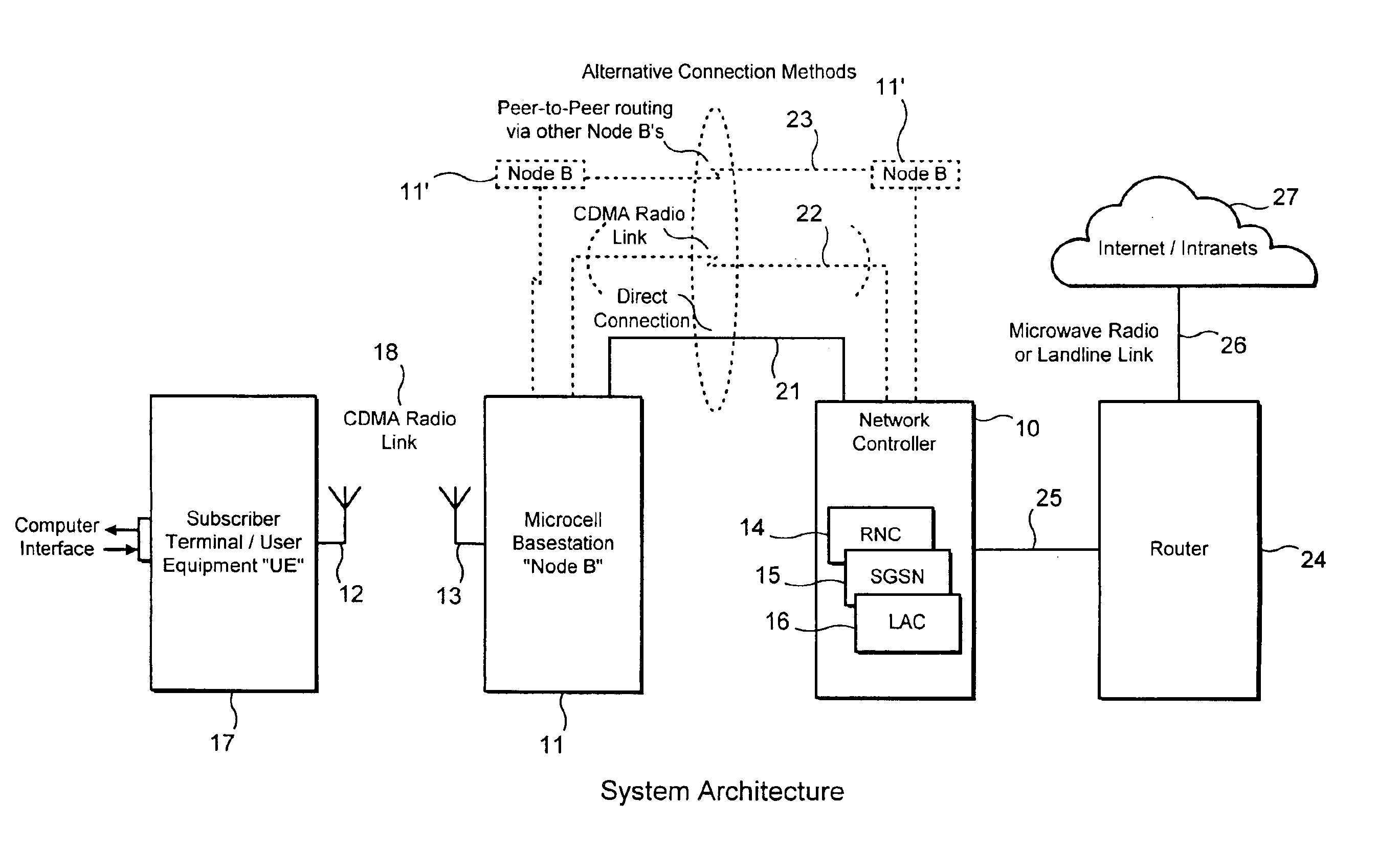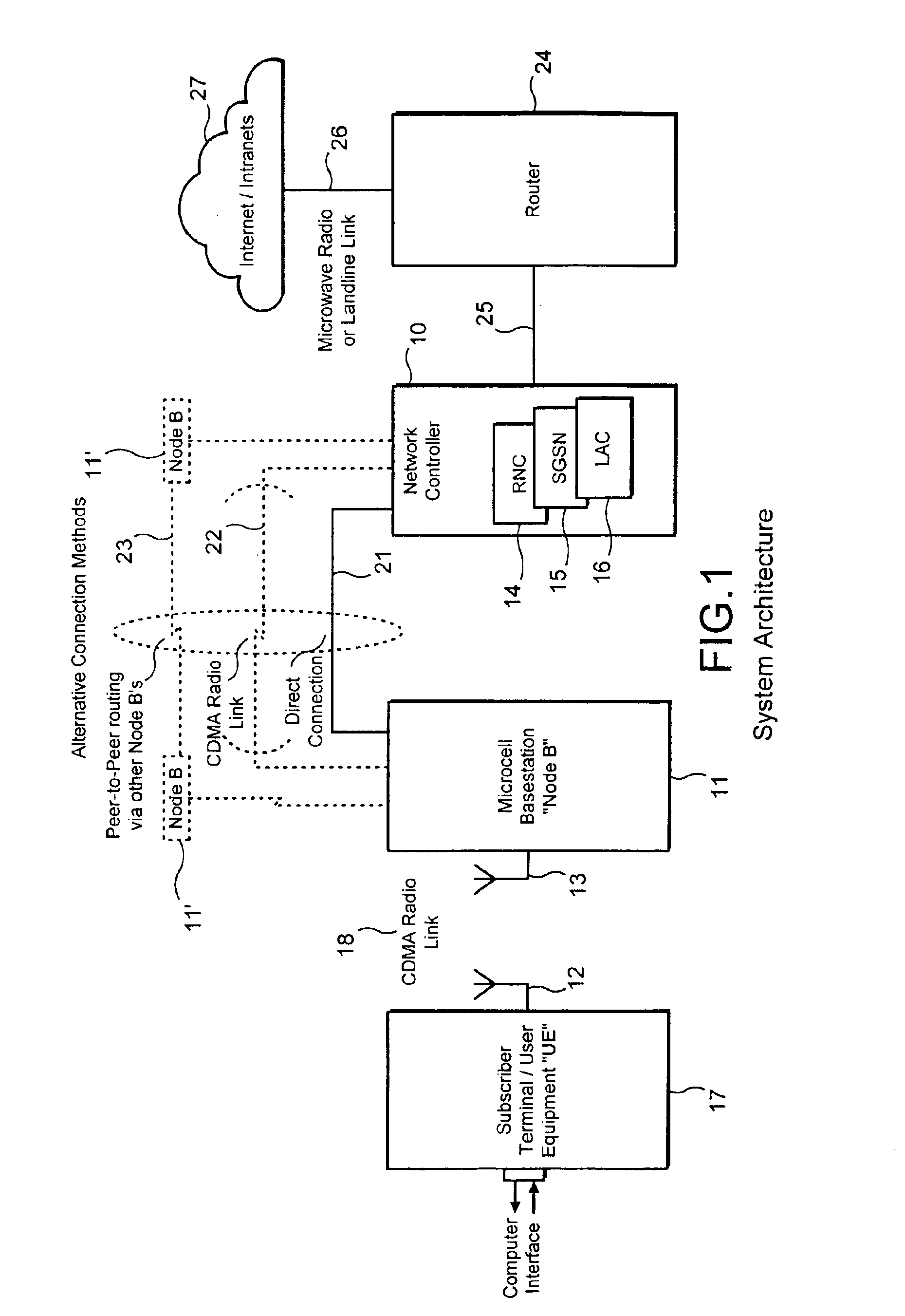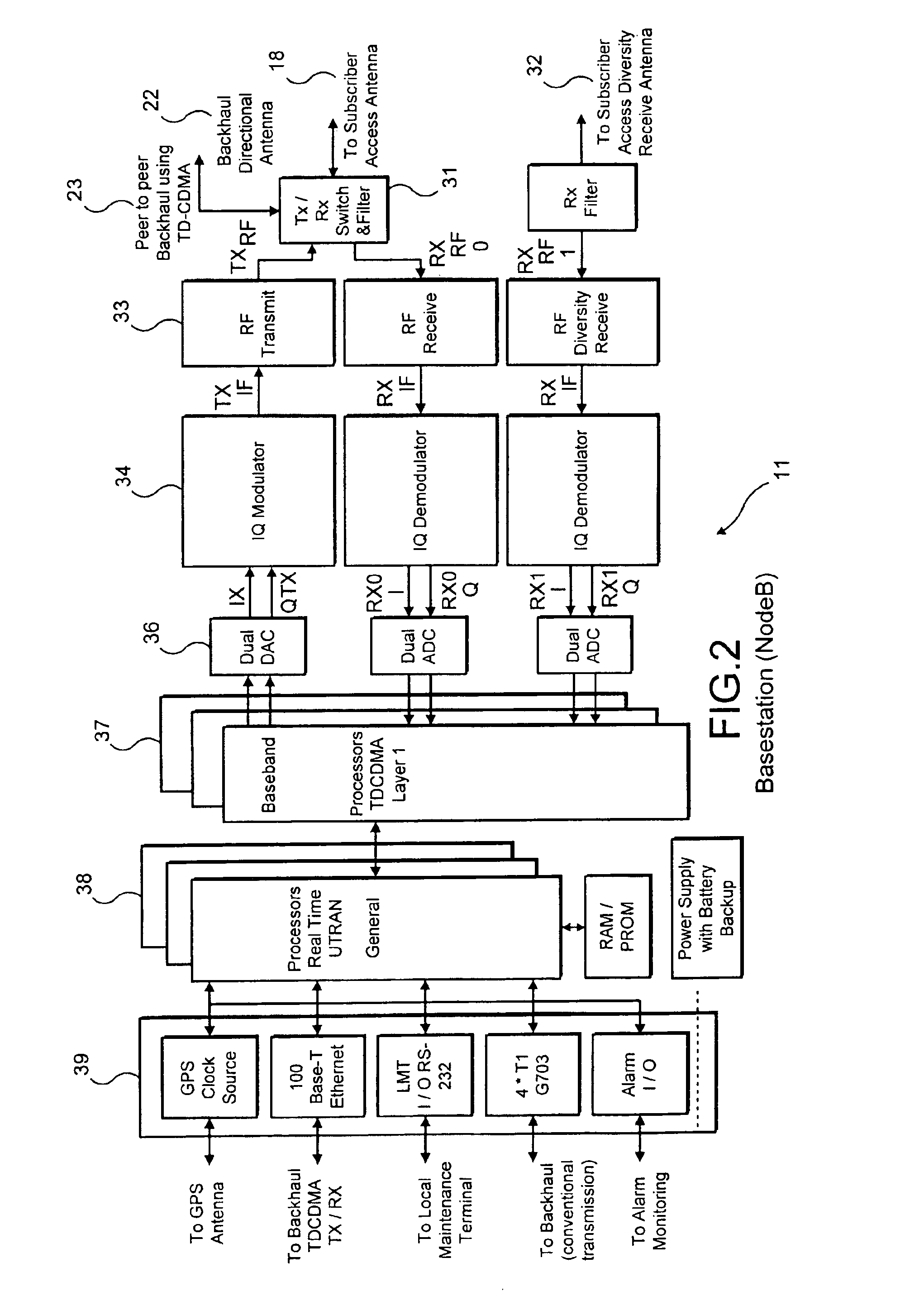Cellular wireless internet access system using spread spectrum and internet protocol
a technology of internet access system and spread spectrum, applied in the field of cellular wireless internet access system using spread spectrum and internet protocol, to achieve the effects of reducing environmental impact, high system capacity, and enhancing time division duplex modes
- Summary
- Abstract
- Description
- Claims
- Application Information
AI Technical Summary
Benefits of technology
Problems solved by technology
Method used
Image
Examples
Embodiment Construction
Referring now to FIG. 1, the wireless aspects of the cellular Wireless Internet Access System of the present invention is broadly based on a wideband code division multiple access (W-CDMA) system which is derived from European third-generation (3G) cellular wireless standards and also known by the acronyms UMTS for Universal Mobile Telephone Service and UTRAN for Universal Terrestrial Radio Access Network but which has enhancements. Using such a standard as a basis in the present system to meet the application requirements of high speed wireless Internet access provides a very flexible wireless or “air interface” supporting a range of net subscriber data rates typically up to 6 megabits per second. Also, radio channel bandwidths from 5 to 20 MHz are supported. By choosing to use the CDMA spread spectrum concept the present system provides for lower error rates, higher speed communication and also immunity to several types of interference, especially the ability to deal with multi-pa...
PUM
 Login to View More
Login to View More Abstract
Description
Claims
Application Information
 Login to View More
Login to View More - R&D
- Intellectual Property
- Life Sciences
- Materials
- Tech Scout
- Unparalleled Data Quality
- Higher Quality Content
- 60% Fewer Hallucinations
Browse by: Latest US Patents, China's latest patents, Technical Efficacy Thesaurus, Application Domain, Technology Topic, Popular Technical Reports.
© 2025 PatSnap. All rights reserved.Legal|Privacy policy|Modern Slavery Act Transparency Statement|Sitemap|About US| Contact US: help@patsnap.com



